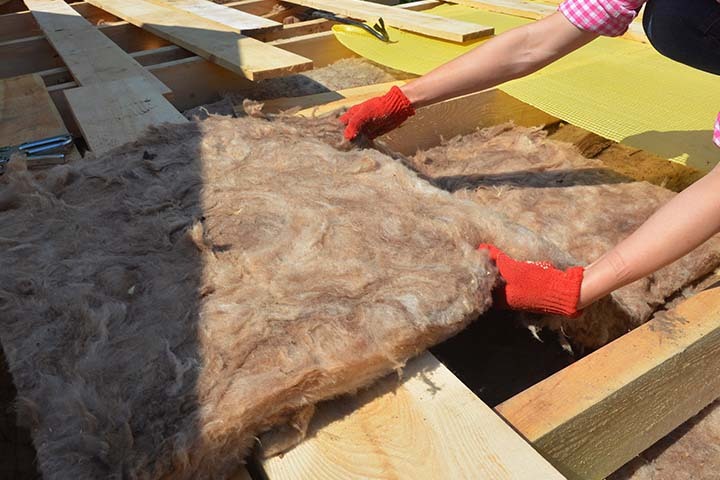Table of Contents
Loft insulation is a smart technique to cut energy costs and keep UK houses warm. It stops heat from leaking across the roof. One somewhat cheap approach to cut heating costs is loft insulation. Insulation is crucial whether your loft serves as a room or for storage.
Insulating your loft keeps the warmth inside your home. This blog will show you how to insulate a loft, what types exist, and key loft insulation dos and don’ts. We will also cover the best loft insulation for different roof types.
Why Loft Insulation Matters in UK Homes
Loft insulation can save money by stopping heat from escaping through the roof. It is a key part of roof and loft insulation. Without it, homes lose heat fast, especially in winter. Loft insulation involves placing insulation material in the loft floor or roof.
This keeps the heat inside the rooms below. Energy-saving loft insulation is good for the environment and your pocket. Cost-effective loft insulation can pay for itself in a few years. Insulation can be installed as a DIY project or by professionals. The insulation you need depends on your loft type and use.
Air Source Heat Pump Grants
Loft Insulation Options
There are two main ways to insulate a loft: warm loft insulation and cold loft insulation. Warm loft insulation means insulating the roof. Cold loft insulation means insulating the loft floor. Both types work in different ways.
Usually, cold loft insulation is ideal if you wish to store things out of your loft. Warm loft insulation is the wise choice if you intend to utilize your loft as a room. Selecting appropriate loft insulation will help to increase the comfort level in your house.
How to Insulate a Loft Floor?
Insulate between the joists of the loft floor with blanket insulation or rolls. Lay the first loft roll between the joists, starting at one corner of the loft. Then lay another layer across the loft floor area to increase insulation thickness. Do not compress the insulation.
Cut the insulation to fit properly around wires and pipes. Make sure the loft hatch is also insulated. If the existing insulation is in good condition, you can top it up. This way to insulate your loft is known as cold loft insulation. DIY loft insulation can save money and be easy if your loft is easy to access.
Types of Loft Insulation Materials
There are different types of loft insulation you can choose. Mineral wool loft insulation is common and affordable. Fiberglass insulation cost is low and easy to install. Loose-fill insulation is good for topping up existing insulation. Foam board loft insulation is best for flat surfaces and strong support.
Spray foam seals air leaks and fills in-between. Excellent for warm loft insulation are rigid insulation boards. Your budget and kind of roof will determine the correct loft insulation. Every insulating material serves a purpose and offers advantages.
Installation Process for Pitched (Sloping) Roofs
Pitched roofs are common in the UK and suitable for loft conversions. These roofs have two sloping sides that form a triangle. You can choose warm loft insulation or cold loft insulation. Warm loft insulation goes between the rafters and ceiling. This keeps the whole loft space warm.
Cold loft insulation goes between the joists of the loft floor. This keeps the loft cold but rooms below warm. Common insulation materials include mineral wool, fiberglass, and sheep’s wool. DIY loft insulation works well for cold lofts. For warm lofts, professional loft insulation may be better.
Installation Process for Flat Roofs
Flat roofs are more level and often found on home extensions. Flat roof insulation needs special methods. There are three ways to insulate: warm deck, cold deck, and inverted roof. Warm deck insulation is placed below the roof deck. Cold deck insulation is placed above the deck with gaps for air to stop dampness.
Inverted roof insulation is placed above the waterproof layer. Flat roof insulation can be tricky. Foam insulation or rigid insulation boards are often used. It is best to hire experts for flat roof insulation. This makes sure the insulation is installed properly and lasts longer.
Other Roof Types and How to Insulate Them
Dormer roofs are small pitched roofs with windows. These can be insulated like pitched roofs. Chalet, bungalow, and A-frame roofs are also pitched and easy to insulate. Use insulation between rafters or on the loft floor. Foam board, batts and rolls, or spray foam can be used.
Always follow loft insulation installation tips to avoid problems. Loft insulation for your property depends on roof type, use, and access. Insulating these roofs helps improve comfort and lower heating bills. Proper insulation may also add value to your home.
Important Parts of the Roof to Know
Knowing roof parts helps with your loft insulation project. Supporting the roof are sloping wooden beams called rafters. Vertical beams called ceiling joists support the ceiling. Strong beams called pull-ins support rafters. A felt sheet called sarking maintains weatherproofing of the roof.
A roof truss is a robust framework supporting the complete roof. Understanding these parts helps when installing loft insulation. It also helps you explain what you need to professionals. This knowledge ensures better results for your insulation work.
Loft Insulation Dos and Don'ts
Do check if existing loft insulation is in good condition before adding more. Do wear safety gear when installing insulation. Do not block air vents when installing insulation. Do not compress the insulation. Do not cover electrical wires carelessly. Do check if you are eligible for a loft insulation grant.
Do plan your loft insulation before you start. Do check insulation thickness for best performance. Don’t forget to insulate the loft hatch. Following loft insulation dos and don’ts helps avoid mistakes. It also ensures the insulation works properly.
Loft Insulation Grants in the UK
In UK homes, loft insulation grants help offset the expense. Under the Great British Insulation Scheme, many properties could be qualified for a loft insulation payment. These handouts enable people to cut energy consumption and save on heating. Loft insulation can be bought with grants covering either half or all of the cost.
You can apply if your home meets the scheme rules. Free loft insulation is available for some low-income families. Loft insulation UK support can make insulation affordable for many. Always check with your energy provider or council for available help.
DIY vs Professional Loft Insulation
DIY loft insulation is good if your loft is easy to access and simple in shape. It can save money. Always follow safety rules when doing insulation yourself. Use correct insulation material and wear protective clothing.
Professional loft insulation is best for complex lofts or warm loft insulation. Experts know how to install insulation safely and properly. They ensure that insulation is installed to last. Professional installation may cost more but saves trouble. If unsure, always talk to a professional for advice.
The Bottom Line: Insulate Your Loft the Right Way
Among the best ways to save energy in UK houses is to insulate your loft. It lowers energy costs and keeps your house cosy. You have options for loft insulation—warm or cold. Your loft and desired usage of the insulation will determine its kind.
Choose among fibreglass, mineral wool, or foam board the appropriate insulating material. For best results follow the loft insulation dos and avoid. Loft insulation can be accomplished either professionally or as a basic do-it-yourself project. Loft insulation helps the world, saves money and energy.
Frequently Asked Questions
Mineral wool and rigid foam boards are mostly used in the pitched roof building structure. The best option depends on whether you’re insulating at joist or rafter level.
For maximum efficiency, loft insulation should be no less than 270mm thick, as recommended by UK energy-saving guidelines.
Yes, but it’s less common. Internal insulation (cold roof) must be carefully ventilated to avoid condensation issues.
Yes, insulating even an unused loft helps reduce heat loss, lowering your heating bills and improving energy efficiency.
Yes, schemes like ECO4 and the Great British Insulation Scheme offer free or discounted insulation for eligible households.



